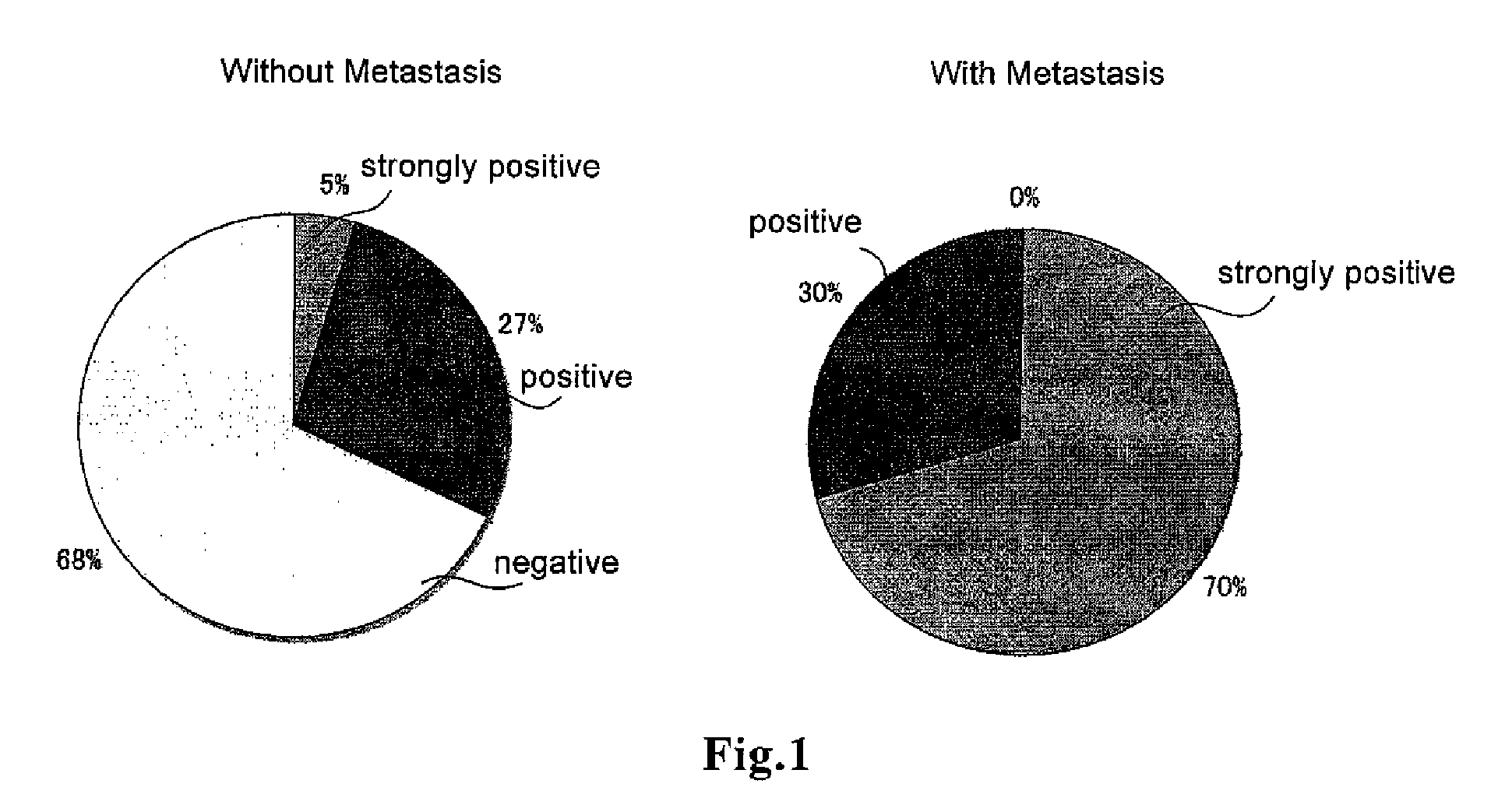Method for determination of prognosis of prostate cancer, and diagnostic agent for use in the method
a prostate cancer and prognosis technology, applied in the field of prostate cancer prognosis determination and diagnostic agent for use in the method, can solve the problems of recurrence of cancer within several years, no molecular marker known to enable the estimation of the prognosis,
- Summary
- Abstract
- Description
- Claims
- Application Information
AI Technical Summary
Benefits of technology
Problems solved by technology
Method used
Image
Examples
example
Materials and Methods
1. Preparation of 254 Phosphorylated NF-κB-p65 / RelA-Specific Antibody
[0024]A phosphorylated peptide (VFRT(PO3H2)PPYADPSC) (SEQ ID NO: 3) which was a fragment of p65 / RelA, containing the 254th threonine (12 amino acids from the 251st valine to 262nd cystein) wherein the 254th threonine had a phosphate group attached thereto was chemically synthesized using a peptide synthesizer. As the phosphorylated threonine to which a phosphate group was added, a commercially available product was used. The obtained peptide fragment was mixed with an equal amount of Freund complete adjuvant (first immunization) or Freund incomplete adjuvant (second and subsequent immunization), and an emulsion was prepared by sonication. The resulting viscose emulsion was subcutaneously administered to the back of a rabbit (New Zealand white rabbit). The immunization was conducted totally 4 times at 2-week intervals. At the time of third immunization, a small amount of the antigen protein was ...
PUM
| Property | Measurement | Unit |
|---|---|---|
| temperature | aaaaa | aaaaa |
| frequency | aaaaa | aaaaa |
| stability | aaaaa | aaaaa |
Abstract
Description
Claims
Application Information
 Login to View More
Login to View More - R&D
- Intellectual Property
- Life Sciences
- Materials
- Tech Scout
- Unparalleled Data Quality
- Higher Quality Content
- 60% Fewer Hallucinations
Browse by: Latest US Patents, China's latest patents, Technical Efficacy Thesaurus, Application Domain, Technology Topic, Popular Technical Reports.
© 2025 PatSnap. All rights reserved.Legal|Privacy policy|Modern Slavery Act Transparency Statement|Sitemap|About US| Contact US: help@patsnap.com

